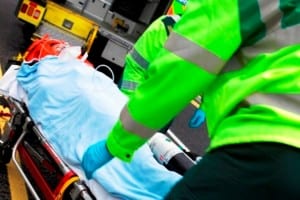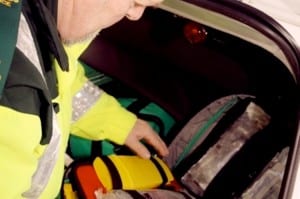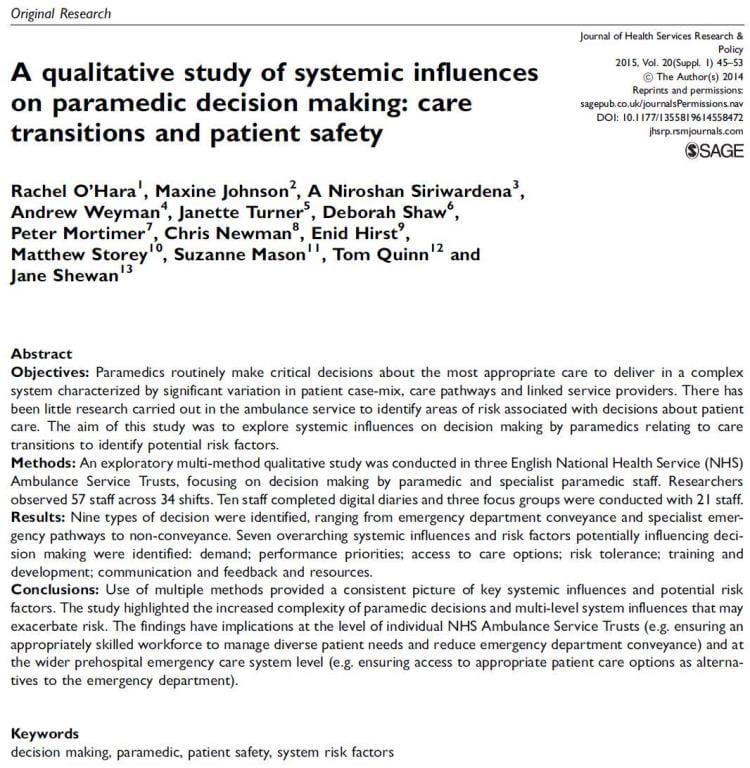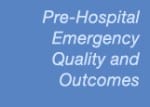 A paper published by the CaHRU team in the journal Implementation Science, ‘The effect of a national quality improvement collaborative on prehospital care for acute myocardial infarction and stroke in England‘ came top in the journal’s measures of social media circulation (altmetrics) in 2014.
A paper published by the CaHRU team in the journal Implementation Science, ‘The effect of a national quality improvement collaborative on prehospital care for acute myocardial infarction and stroke in England‘ came top in the journal’s measures of social media circulation (altmetrics) in 2014.
 The study was funded as part of the Ambulance Services Cardiovascular Quality Initiative (ASCQI) by the Health Foundation under their Closing the Gap in Clinical Communities programme and led to improvements in care for heart attack and stroke in England. More recently the ASCQI team have been funded by the Health Foundation under their Widening Improvement programme to spread the learning from ASCQI to other clinical areas in ambulance services in the Improving Prehospital and Ambulance Care and Treatment following ASCQI (ImPACT-ASCQI) project. This work was presented recently at the EMS99 Forum conference in Nottingham.
The study was funded as part of the Ambulance Services Cardiovascular Quality Initiative (ASCQI) by the Health Foundation under their Closing the Gap in Clinical Communities programme and led to improvements in care for heart attack and stroke in England. More recently the ASCQI team have been funded by the Health Foundation under their Widening Improvement programme to spread the learning from ASCQI to other clinical areas in ambulance services in the Improving Prehospital and Ambulance Care and Treatment following ASCQI (ImPACT-ASCQI) project. This work was presented recently at the EMS99 Forum conference in Nottingham.
 The findings from ASCQI and resources are also being disseminated in a new website and the result are having impact in other areas of the world such as Quatar and the United States.
The findings from ASCQI and resources are also being disseminated in a new website and the result are having impact in other areas of the world such as Quatar and the United States.






